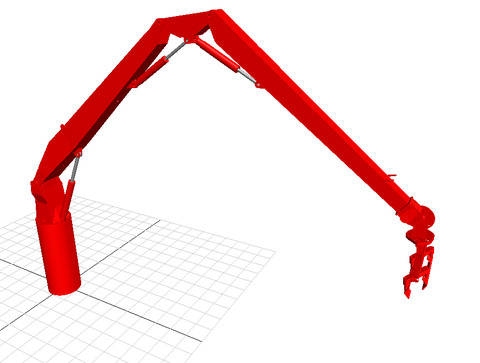Modelling offshore handling equipment
8 Nov 2012

With offshore oil and gas drilling rigs costing millions a day, their crews need to ensure they get the job done as quickly as possible.
That job involves assembling the thousands of meters of flexible pipe that make up a drill string, and doing so safely and consistently on a remote platform where space is at premium and weather conditions are frequently challenging.
Modern drilling platforms make use of highly specialised materials handling equipment to ensure components are moved quickly, precisely and safely to keep the rig on schedule.
Typically, this equipment is hydraulically operated, with most modern systems also incorporating a sophisticated electronic control system, which simplifies operation and permits a considerable degree of automation.
Designing such control systems is challenging, particularly since as a crane is in motion its dynamic behaviour depends upon, among other things, the precise electrical and hydraulic behaviour of the control valves, the performance of its hydraulic actuators, the inertia of the crane’s structure and its load and the complex interactions.
A Norwegian university research project is using MapleSim models to predict the performance of complex offshore materials handling equipment. In the short term, the work is helping designers pick the best components for the job. Ultimately, it aims to automate more of the design process.
For details click the report link below.

